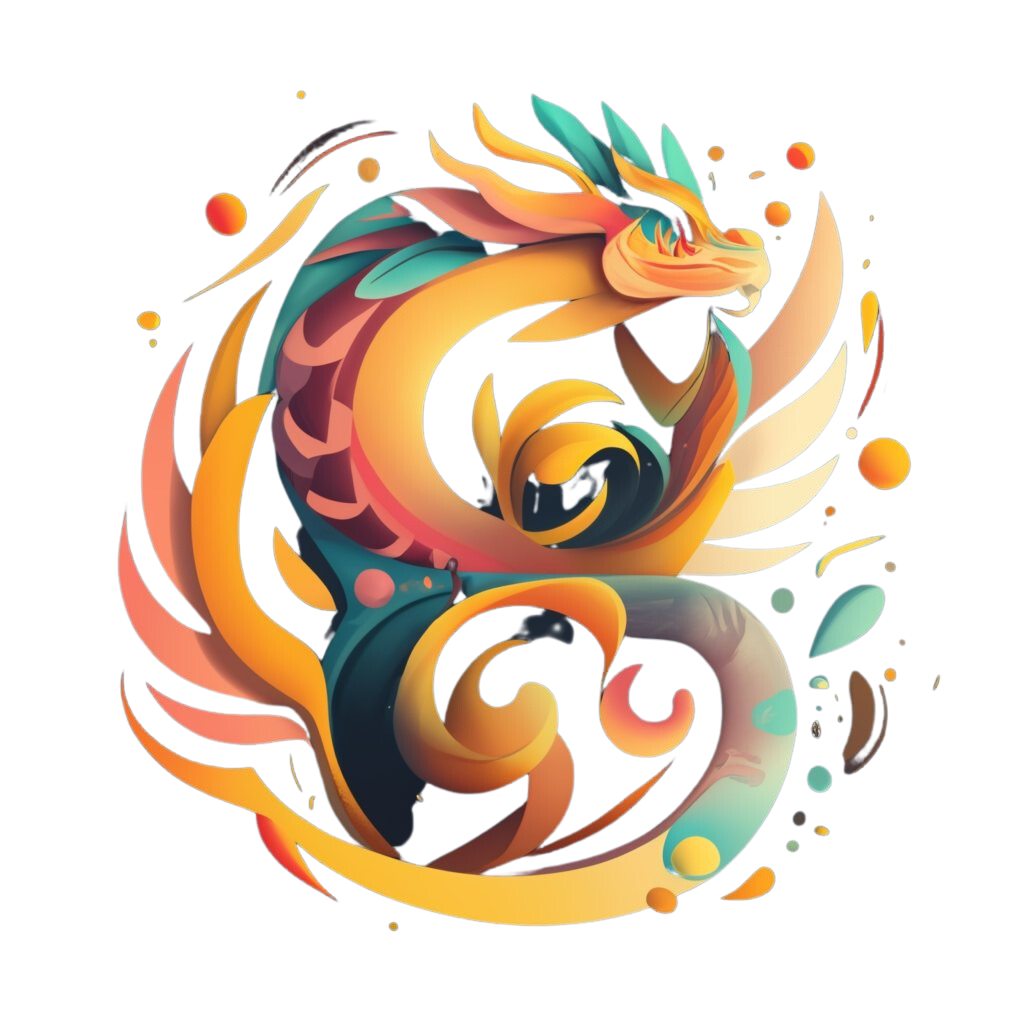For centuries, Latin American mythical creatures have been part of the folklore. Stories of magical beings and legendary creatures have been passed down. These creatures are a big part of Latin American folklore and culture.
In Mexico's lush forests to Cuba and Puerto Rico's vibrant streets, these creatures are a big part of the heritage. The stories of folklore, legends, and mythical creatures are woven together. They continue to fascinate people today.
Latin American folklore is full of amazing stories and creatures. These stories take us to a world of magic and wonder. They also give us a peek into the region's rich cultural heritage.
Key Takeaways
- Latin American mythical creatures are a big part of the region's folklore and culture.
- These creatures have been passed down through generations, with stories of magical beings and supernatural entities.
- Latin American folklore is a rich tapestry of legends, myths, and mythical creatures.
- The region's cultural heritage is deeply rooted in its folklore and legends.
- Latin American mythical creatures continue to captivate audiences today, inspiring countless works of art, literature, and film.
- Exploring Latin American mythology provides a unique glimpse into the region's history, culture, and traditions.
The Rich Tapestry of Latin American Folklore
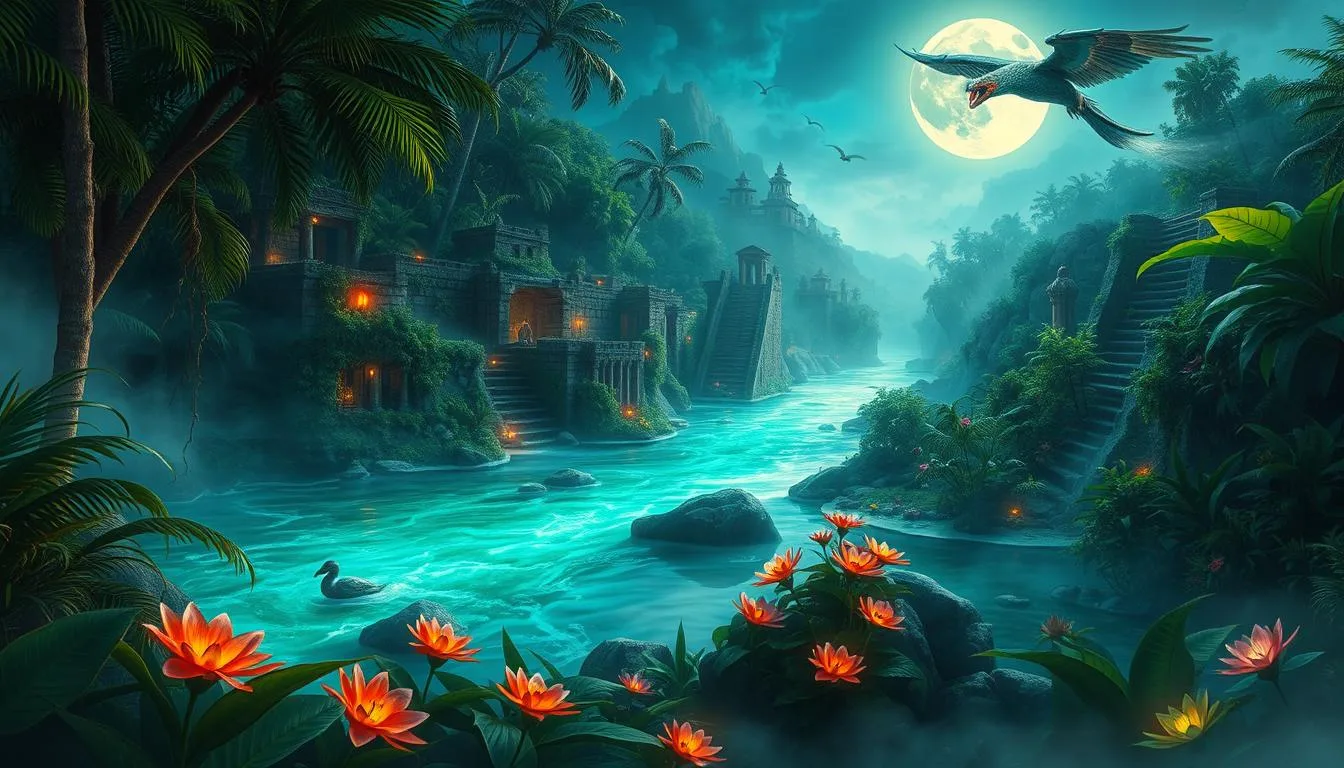
Latin American folklore is full of color and stories. It comes from many cultures mixed together. Before the Spanish came, there were big civilizations with their own myths.
The Spanish brought new ideas, mixing with the old ones. This mix made the folklore we see today. It's a story of many cultures coming together.
- Indigenous mythologies, like Aztec and Inca stories
- African influences from enslaved people
- European folklore from the colonizers
- A blend of these cultures, making a unique folklore
This folklore is full of interesting tales and characters. It tells of mythical creatures and stories from the colonial times. By looking into its origins, we learn about the region's culture and history.
| Region | Indigenous Influences | Colonial Legacy |
|---|---|---|
| Mexico | Aztec, Mayan | Spanish |
| Peru | Inca | Spanish |
| Brazil | Tupi, Guarani | Portuguese |
Understanding Latin American Mythical Creatures
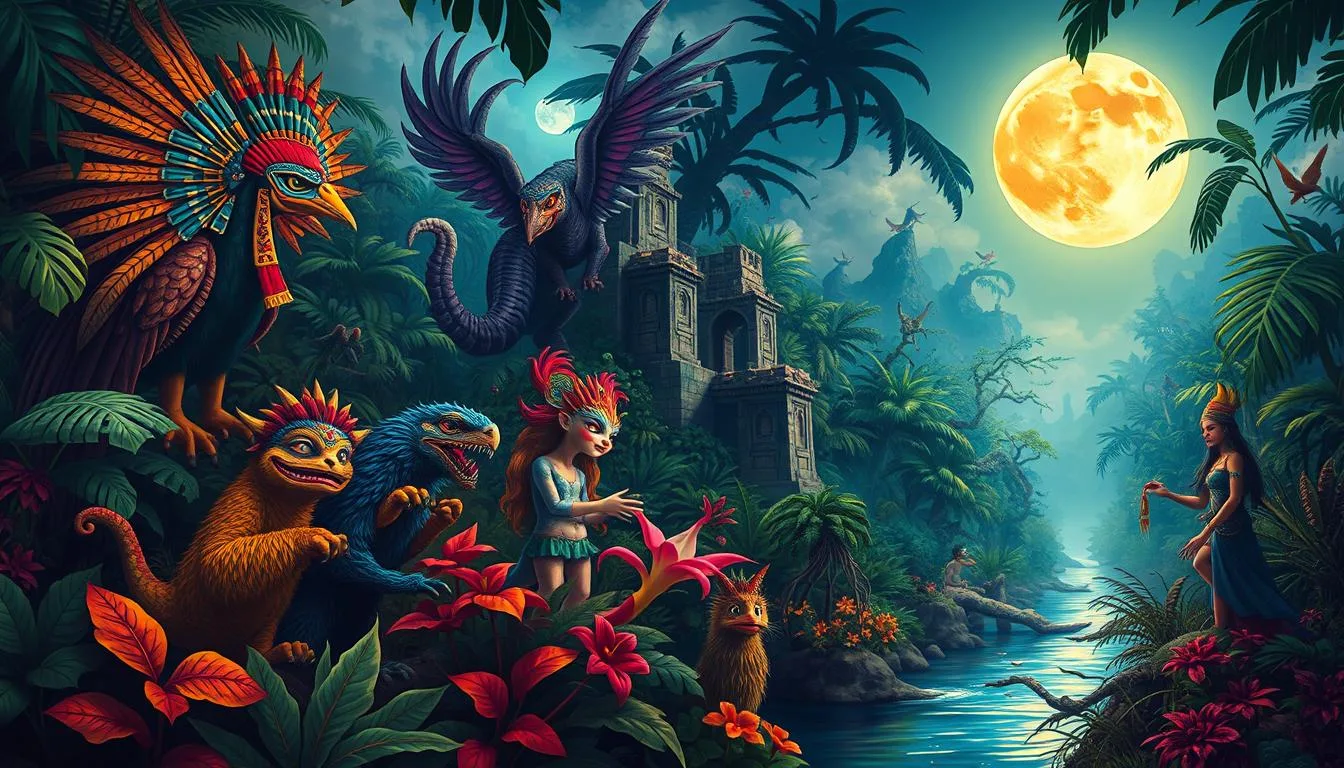
Latin American mythical creatures are as diverse as the cultures that created them. They play a big role in the region's folklore and cultural significance. Creatures like the Chupacabra and La Llorona have amazed people for centuries.
There are many mythical creatures in Latin America. Each country has its own legends and stories. Some are kind, while others are scary. They help explain the world and the lives of gods and goddesses.
Some examples of Latin American mythical creatures include:
- El Cuero, a creature from Colombian folklore that is said to be a cowhide come to life
- La Llorona, the weeping woman from Mexican folklore who is said to haunt rivers and lakes
- El Chupacabra, a legendary creature from Puerto Rican folklore that is said to drain the blood of livestock
Learning about these mythical creatures helps us understand Latin American legends better. It shows us the cultural significance of the region's folklore. By exploring these stories, we can learn more about the cultures and their importance today.
| Creature | Country of Origin | Description |
|---|---|---|
| El Cuero | Colombia | A creature made from a cowhide come to life |
| La Llorona | Mexico | The weeping woman who haunts rivers and lakes |
| El Chupacabra | Puerto Rico | A legendary creature that drains the blood of livestock |
Ancient Cuban Legends and Their Supernatural Beings
Cuban mythology is full of magical creatures. These stories have been shared for many years. They mix the island's many cultures, making its tales special.
Water spirits are key in Cuban stories. The Güije lives in rivers and lakes. It loves to play tricks on people. Other creatures like La Lechuza and El Coco also play big roles in Cuban tales.
The Güije: Cuba's Water Spirit

The Güije is a mysterious water creature. It's said to control water. Legends say it lives in rivers and lakes, sometimes helping people.
Other Supernatural Beings in Cuban Folklore
Other magical beings in Cuban stories are:
- La Lechuza: a witch who can turn into an owl
- El Coco: the Caribbean boogeyman
- Water spirits: that live in rivers and lakes
These magical beings are a big part of Cuban stories. They keep people all over the world interested. Learn more about Cuban Mythical Creatures here: Cuban Mythical Creatures
Modern Day Sightings in Cuban Culture
Cuban mythical creatures are big in today's culture. People see them and share stories. These tales are part of the island's life.
Art and books show these creatures. They come from Cuba's deep culture. The Güije, La Lechuza, and El Coco are famous. They have their own stories and powers.
Here are some modern sightings and experiences in Cuban culture:
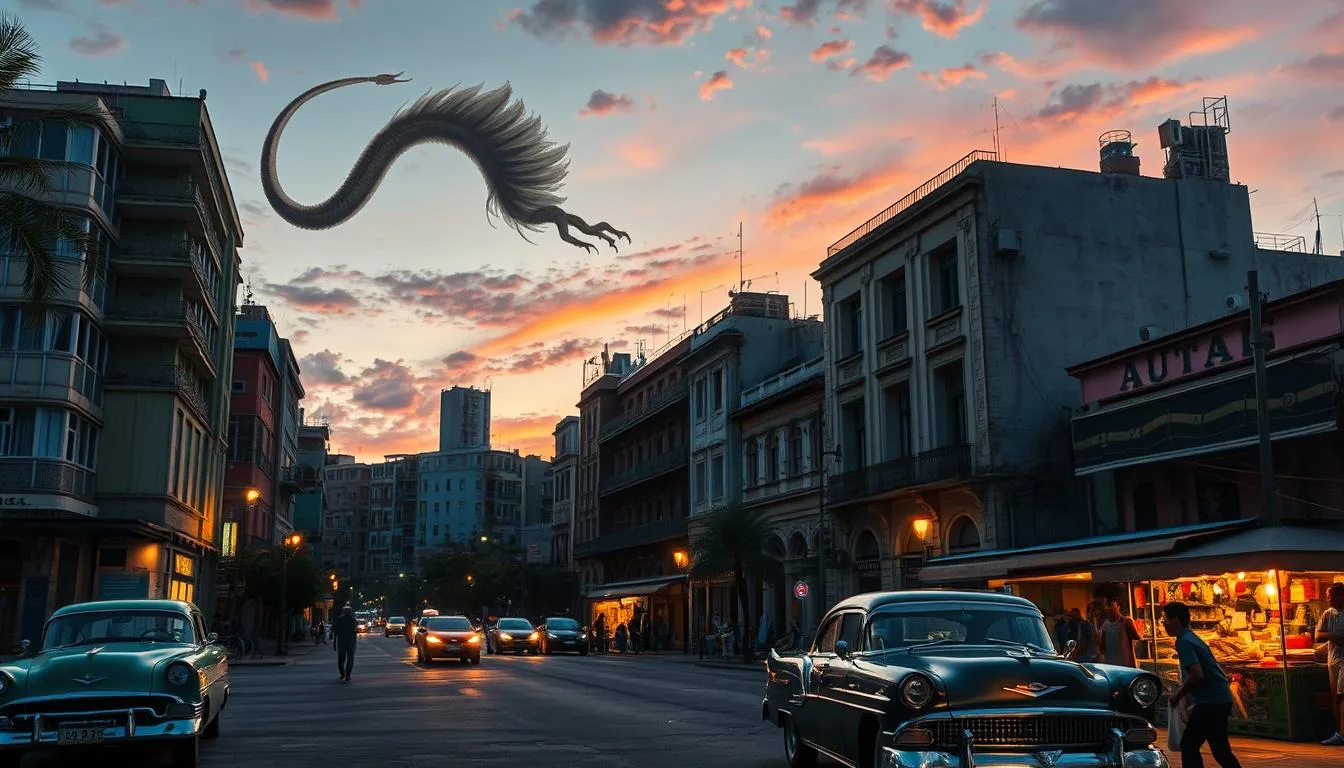
- Reported sightings of the Güije, a water spirit said to inhabit the island's rivers and lakes
- Stories of La Lechuza, a witch who becomes an owl and is said to roam the countryside at night
- Experiences of El Coco, a boogeyman-like creature said to punish naughty children
The power of folklore in contemporary society shows in many Cuban things. Art, books, music, and dance all show it. Cuba's rich culture makes people proud. The myths show how Cuban culture stays strong and changes over time.
| Creature | Description | Modern Sightings |
|---|---|---|
| Güije | Water spirit | Reported sightings in rivers and lakes |
| La Lechuza | Witch who becomes an owl | Stories of nighttime roamings |
| El Coco | Boogeyman-like creature | Experiences of punishment for naughty children |
Puerto Rican Folklore: A World of Mystery
Puerto Rican folklore is full of mystery. It has creatures that amaze people everywhere. El Chupacabra and La Llorona are key figures in this folklore.
Legendary Creatures
Some famous creatures in Puerto Rican folklore are:
- El Chupacabra, a legendary beast said to drain the blood of livestock
- La Llorona, a ghostly figure doomed to wander the earth, searching for her lost children
These creatures are a big part of Puerto Rican folklore. They spark wonder and fear in listeners.
Exploring Puerto Rican folklore shows these creatures are more than just stories. They are tied to the island's history and culture. Stories of El Chupacabra and La Llorona have been shared for generations. They are a big part of Puerto Rican identity.
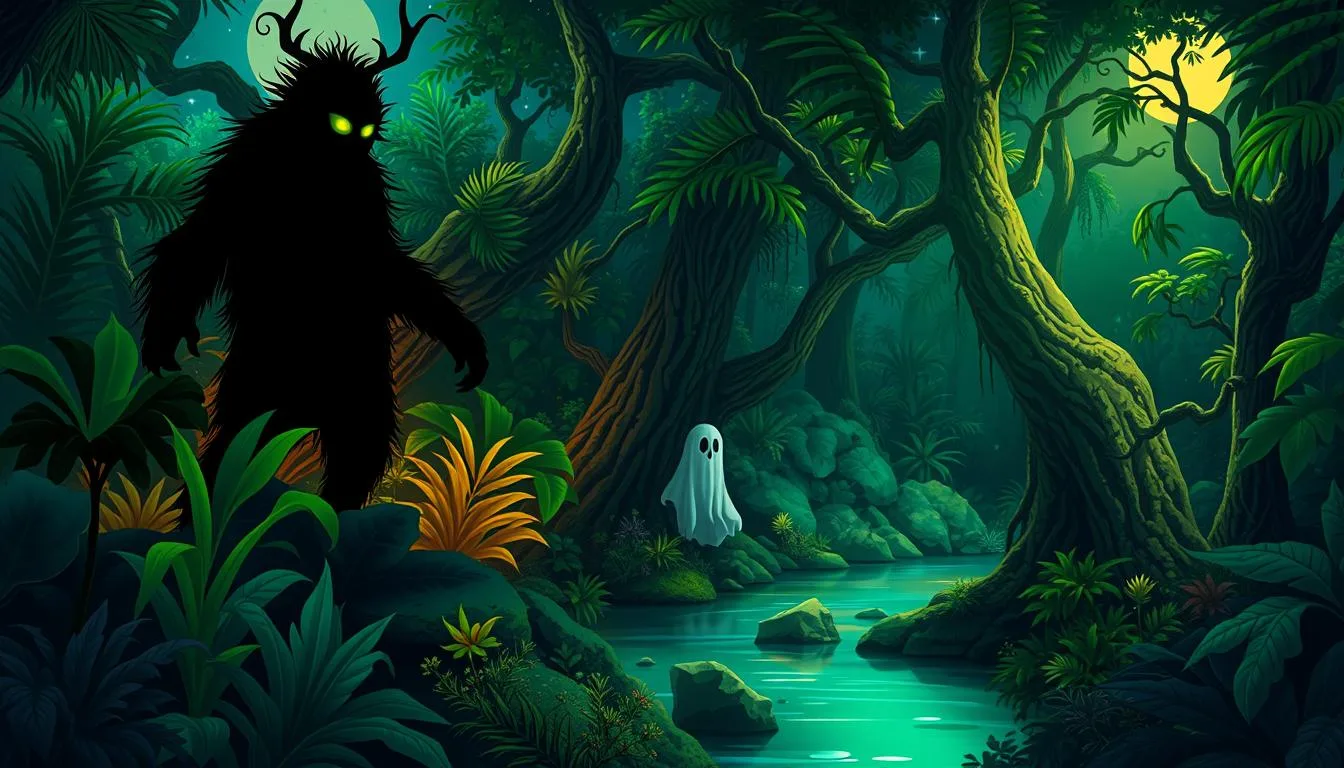
Mysterious Creatures of El Yunque
El Yunque, Puerto Rico's rainforest, is home to many mysterious creatures. El Chupacabra is one of them. These creatures have sparked many stories and legends. They continue to fascinate those interested in Puerto Rican folklore.
Puerto Rico's Urban Legends Today
In modern Puerto Rico, urban legends are a big part of city folklore. These stories mix old myths with today's world. They show what people fear and believe today.
Some common themes include supernatural beings and strange events. For example, El Chupacabra stories now include sightings in cities. This mix of old and new makes these legends very interesting.
Characteristics of urban legends in Puerto Rico include:
- Supernatural creatures, such as El Chupacabra and La Llorona
- Unexplained events, such as ghost sightings and mysterious disappearances
- Modern settings, such as cities and urban areas
Looking at these legends helps us understand modern Puerto Rican society. The fact that old myths live on in cities shows their lasting impact on culture.
Mexican Mythology: Ancient Tales of Power
Mexican mythology is full of amazing stories and creatures. It has Aztec beings that are very interesting. These beings, like Quetzalcoatl, are key in Mexican stories.
There are also shape-shifting warriors called Nahual. They can change into different animals. And there are spirits called Alebrijes that help us in our dreams.
The Significance of Aztec Creatures
Aztec creatures are very important in Mexican stories. They are linked to nature and have special powers. Learning about them helps us understand the Aztecs better.
Modern Interpretations of Mexican Mythology
Today, Mexican myths are seen in movies, books, and more. The Aztec beings and shape-shifting warriors are popular. This keeps the myths alive for new people to enjoy.
| Mexican Mythological Creature | Description |
|---|---|
| Alebrijes | Spirits that inhabit the world of dreams |
| Nahual | Shape-shifting warriors with the ability to transform into various animals |
| Quetzalcoatl | Feathered serpent god |
Traditional Mexican Monsters in Popular Culture
Mexican monsters are big in popular culture. They show up in movies, TV, and books. These stories mix old tales with new settings, sharing Mexican myths with more people.
Seeing Mexican monsters in media makes them more important. It keeps their stories alive for today's kids. This way, they learn to love Mexican folklore.
- La Llorona, the weeping woman, is in many films and TV shows.
- El Chupacabra, the legendary beast, is in documentaries and books.
- El Nahual, the shape-shifting warrior, is in movies, TV, and comics.
These monsters in media show how rich Mexican folklore is. They also show how these creatures matter today. By looking at their role in culture, we learn more about their value and how they shape our dreams.
Learn more about Mexican Mythical Creatures here: Mexican Mythical Creatures
The Impact of These Creatures on Modern Media
Latin American mythical creatures have made a big splash in modern media. Their stories and legends have been turned into films, TV shows, books, comics, and video games. These creatures have caught the hearts of people all over the world.
Movies and Television Adaptations
Many movies and TV shows have featured creatures from Latin America. For example, La Llorona from Mexico has been in several films and TV series. These stories have brought these creatures to more people, making them very popular.
Literature and Comic Books
Books and comics have also helped make these creatures famous. Many writers and comic artists have been inspired by them. They use these creatures in their stories or add their tales to their work.
Video Games and Digital Media
Video games and digital media have also been influenced by these creatures. Many games include them as characters or tell their stories. This has introduced these creatures to a new group of fans and keeps them relevant today.
The influence of Latin American mythical creatures on modern media is huge. Their stories and legends have been adapted in many ways. This has made them known to more people and kept their popularity alive.
- Films: La Llorona, El Chupacabra
- Literature: The House of the Spirits, One Hundred Years of Solitude
- Comic Books: The League of Extraordinary Gentlemen, Hellboy
- Video Games: Grim Fandango, Broken Age
Preserving Ancient Stories in the Digital Age
In today's world, keeping folklore alive is very important. Online sites help share stories from all over. But, there's a danger of losing the true meaning of these tales.
Groups are working hard to save folklore online. They make digital spaces for stories and legends. For example, the Library of Congress has a big collection online. Anyone with internet can see it.
Here are some ways to save Latin American folklore online:
- Make digital spaces for stories and legends.
- Give places for communities to share their heritage.
- Teach people why folklore is important.
- Work with cultural groups to save folklore.
By teaming up, we can keep folklore safe for the future. We can use the internet to share stories. And we must make sure these tales stay true to their roots.
| Initiative | Goal | Outcome |
|---|---|---|
| Creating digital archives | Preserve folklore and folktales | Increased access to cultural heritage |
| Providing online platforms | Share and preserve cultural heritage | Stronger sense of community and cultural identity |
| Developing educational programs | Teach people about preserving folklore | Increased awareness and appreciation of cultural heritage |
The Living Legacy of Latin American Mythical Creatures
Latin American mythical creatures are a living legacy. They inspire and teach us. Their tales and legends have shaped the cultural heritage of the area. They influence art, literature, music, and film.
The folklore's impact is seen in today's culture. These creatures appear in movies, TV, books, and music. They grab our attention and spark creativity in artists and writers.
Here's how these creatures keep influencing us:
- They inspire new art and stories.
- They help shape the region's culture and history.
- They offer a special view of the world and its secrets.
In summary, the legacy of Latin American mythical creatures shows folklore's lasting impact. By exploring these stories, we learn more about the region's culture. We also see how it inspires and teaches us today.
Brazilian Mythical Creatures: Guardians, Tricksters, and Dark Spirits
Brazilian mythology is a vibrant mix of Indigenous, African, and Portuguese influences, resulting in a diverse range of mythical creatures that continue to captivate and terrify. These legendary beings are deeply tied to Brazil’s lush rainforests, winding rivers, and spiritual traditions, reflecting the country’s unique cultural fusion.
One of the most famous creatures is the Curupira, a mischievous forest guardian with fiery red hair and backward-facing feet, known for protecting the Amazon and leading hunters astray. The Boitatá, a giant, glowing serpent, is said to haunt rivers and swamps, punishing those who disrespect nature. Meanwhile, the Lobisomem, Brazil’s version of the werewolf, is a feared shapeshifter that emerges under a full moon. From trickster spirits to supernatural beasts, these legends are woven into Brazilian folklore, influencing traditions, storytelling, and even modern beliefs.
Dive into the mysterious world of Brazilian mythical creatures and their fascinating origins here.
FAQ
What are some of the most prominent mythical creatures found in Latin American folklore?
Famous creatures in Latin American folklore include the Chupacabra and La Llorona. Also, the Güije, La Lechuza, El Coco, and the Nahual are well-known.
How have Latin American mythical creatures influenced modern culture and media?
These creatures have inspired many modern media. They appear in films, TV shows, books, comics, and video games. They mix old stories with new settings, reaching more people.
What is the significance of preserving Latin American folklore in the digital age?
Keeping folklore alive online is key. It keeps stories true and real. But, we must watch out for cultural mistakes and the short life of online stuff.
How have Cuban mythical creatures, such as the Güije and La Lechuza, remained relevant in modern Cuban culture?
Cuban myths are big in today's culture. They show up in festivals, art, and stories. People see them in real life or in media.
What is the significance of the Chupacabra and La Llorona in Puerto Rican folklore?
The Chupacabra is a scary legend in Puerto Rico. La Llorona is a ghost looking for her kids. Both are big in Puerto Rican stories.
How have Mexican mythical creatures, such as the Alebrijes and the Nahual, been represented in popular culture?
Mexican myths are in movies, TV, and books. They mix old tales with new ideas. This brings Mexican myths to more people.
